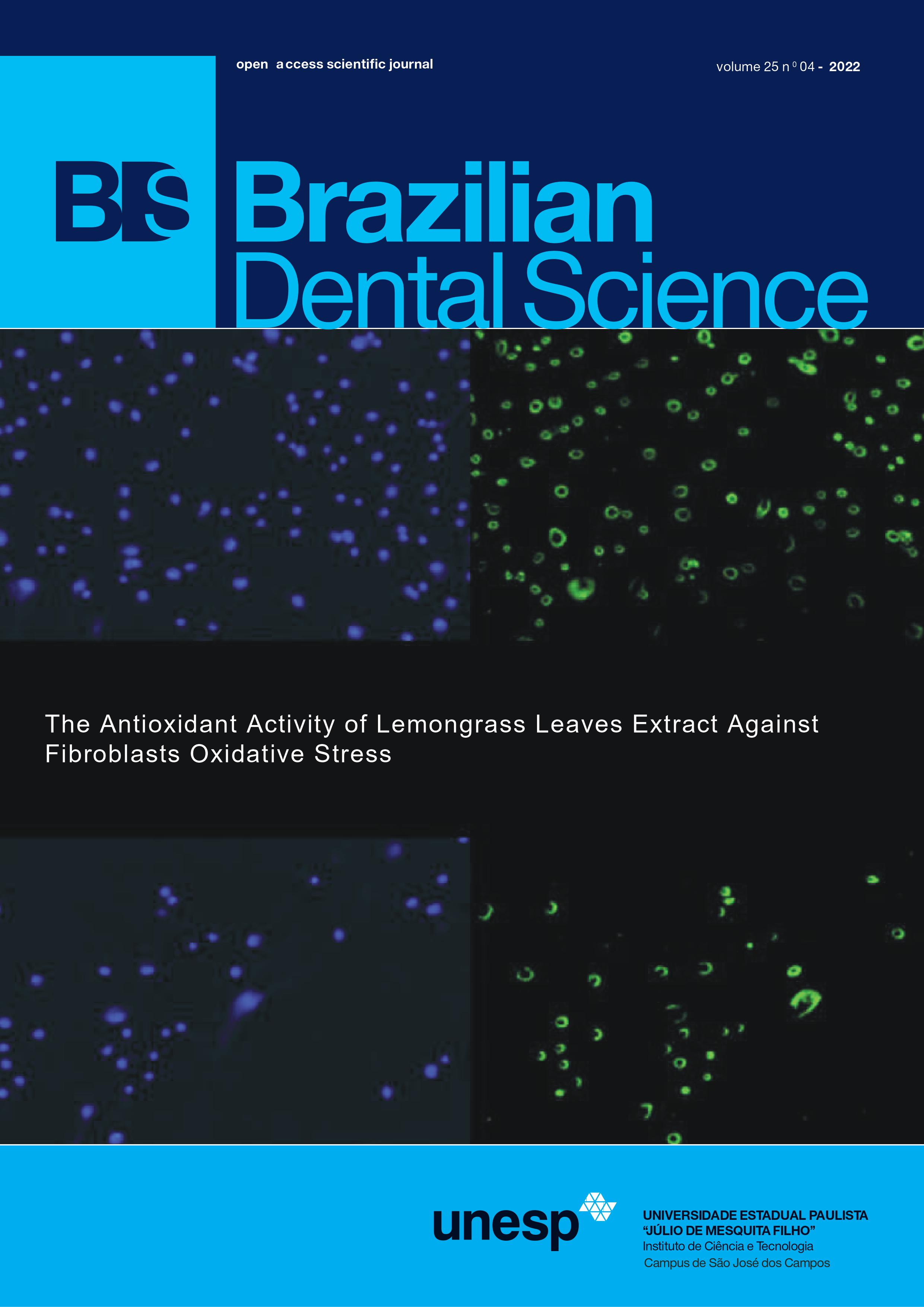Antibacterial effect of bioactive glass incorporated in acrylic resins against Streptococcus mutans and Lactobacillus acidophilus activity in biofilm
DOI:
https://doi.org/10.4322/bds.2022.e3317Resumo
Objective: The rough surfaces of removable appliances used in pediatric dentistry or orthodontics, may result in
an environment for biofilm accumulation, yielding to enamel demineralization. This study aimed to assess the
effects of adding nanoparticles of bioactive glass to polymethylmethacrylate to promote the antibacterial activity
in acrylic resins. Material and Methods: Acrylic resin specimens (20x20x1mm3) were prepared by adding 2% or
5% bioactive glass. The specimens in the control group without bioactive glass were prepared from the mixture
of acrylic powder containing nanoparticles and liquid monomer (n=10 per group). The antibacterial activity of
the specimens against Streptococcus mutans and Lactobacillus acidophilus activity in biofilm was investigated
through counting colony forming units (CFU). Data were analyzed using a one-way analysis of variance and
Tukey’s post hoc tests at the significance level of 0.05. Results: The incorporation of 2% (p=0.001) and 5%
(p<0.001) bioactive glass in acrylic resin reduced the metabolic activity and CFU of L. acidophilus. For S.mutans,
antimicrobial activity was observed only with the 5% concentration of bioactive glass, and this group was
statistically different from the control (p<0.001). When L. acidophilus was exposed to polymethyl methacrylate
with 5% bioactive glass, significant decrease was observed compared to the control group (p<0.05). Conclusion:
Adding bioactive glass nanoparticles into the acrylic resins used for fabricating removable appliances revealed
a greater antibacterial effect against cariogenic bacteria tested.
KEYWORDS
Acrylic resins; Anti-bacterial agents; Bioactive glass; Dental materials; Pediatric dentistry.
Downloads
Downloads
Publicado
Como Citar
Edição
Seção
Licença
TRANSFERÊNCIA DE DIREITOS AUTORAIS E DECLARAÇÃO DE RESPONSABILIDADE
Toda a propriedade de direitos autorais do artigo "____________________________________________________________________" é transferido do autor(es) para a CIÊNCIA ODONTOLÓGICA BRASILEIRA, no caso do trabalho ser publicado. O artigo não foi publicado em outro lugar e não foi submetido simultaneamente para publicação em outra revista.
Vimos por meio deste, atestar que trabalho é original e não apresenta dados manipulados, fraude ou plágio. Fizemos contribuição científica significativa para o estudo e estamos cientes dos dados apresentados e de acordo com a versão final do artigo. Assumimos total responsabilidade pelos aspectos éticos do estudo.
Este texto deve ser impresso e assinado por todos os autores. A versão digitalizada deverá ser apresentada como arquivo suplementar durante o processo de submissão.




























